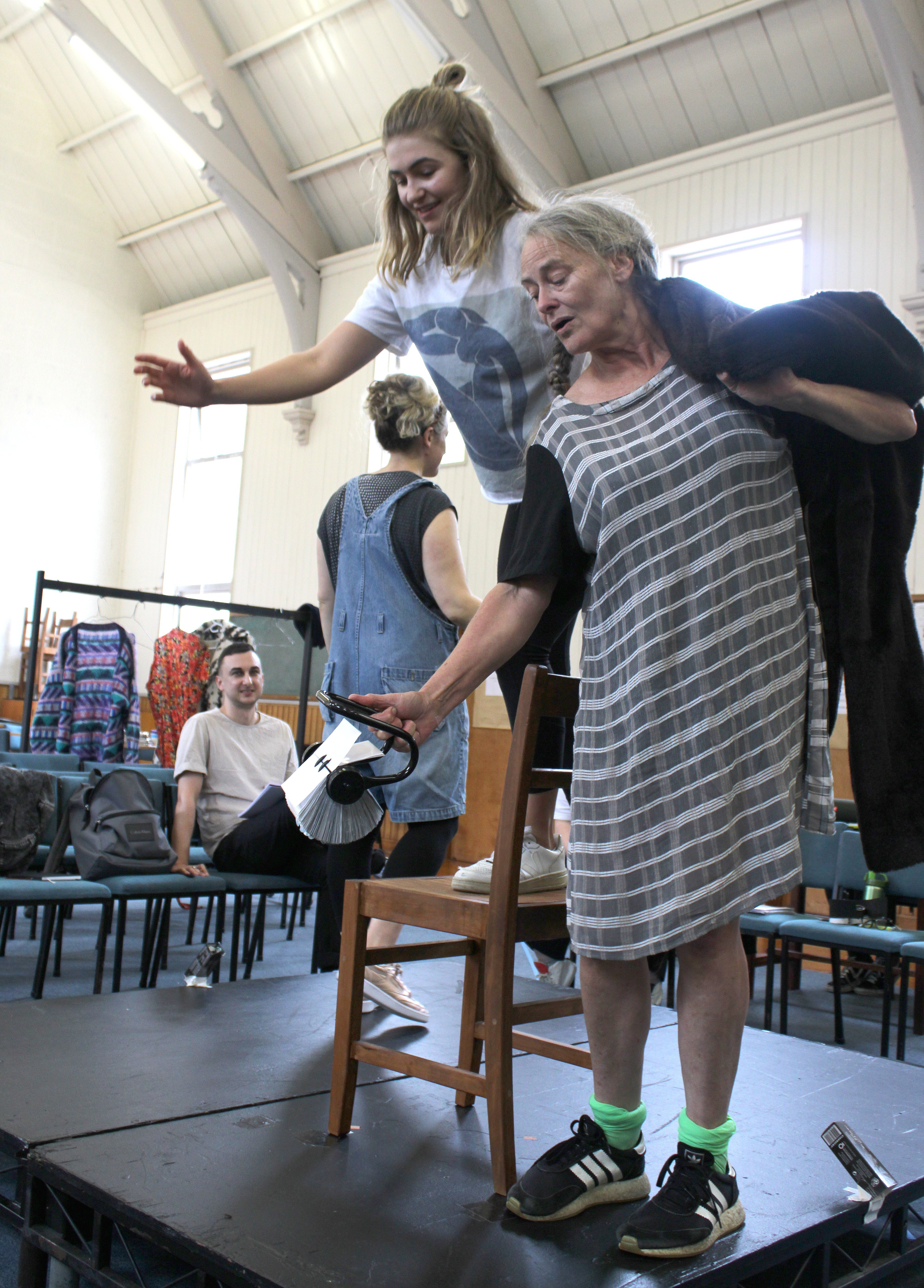
Ro Bright is sitting in a room surrounded by hundreds of singers performing together.
She has stumbled across the form of music called sacred harp, a 200-year-old folk, traditional choral and a cappella singing that took hold in the south of the United States.
"They have these conventions where they all get together and sing. I was intrigued by the music."
At a Manhattan convention she sat among the singers who are known to "shake walls".
"It was probably the most moving experience in my life. They’re powerful, they’re loud. It’s a very unpretentious form of singing. It’s very communal. They all sing facing each other, for each other.
"It was just so powerful. I thought I can’t wait to find a story that will connect with this type of music and pull audience members into this world."
Bright and Kitan Petkovski are part of the Bullet Heart Club . Their company looks at particular forms of music and digs into what makes that form of music connect with people and why a piece of music or song affects people in certain ways.
"We take that and put it into theatre and storytelling."

Their last show, Daffodils, explored the cannon of New Zealand pop music.
For this project, they wanted to find a story that was able to use sacred harp to move audiences.
"It’s been a long journey to find a story that could really connect with this music."
That story turned out to be how families experience and cope with dementia, in particular frontotemporal dementia.
It was inspired by the story of Pat, an Auckland dementia patient, as well as their own experiences — both Bright and Petkovski had grandmothers who suffered from the disease.
"The whole community came out to search for Pat. I remember being really moved by this idea of the affects of dementia on families and the isolation that can have and juxtaposing that with community and what dementia means within community - because sacred harp is all about community and music has such a huge impact on those with dementia."
Petkovski says in developing the story they looked at whether the current generation is prepared to look after their parents.
"That was a starting point of wanting to look at the story from a carer’s perspective, a daughter looking after her mother and the responsibility she has and the sacrifices she has to make - the unconditional love that comes with that. From being taken care of by your parent to also eventually taking care of them when the time comes.
"That was a touch-point we kept coming back to."
Petkovski says The Hall is about the characters getting one last chance to see their mother/grandmother, played by Donogh Rees, as who she was.
"It’s what the music does. It gets them in touch with the mother she was, the grandmother she was ..."
Bright’s New York University teacher Pat Irwin (The B-52s, SUSS) wrote the music for the piece.
"He used to do sacred harp singing when he was in college. We were like ‘Oh, fantastic’."
The idea behind The Hall was to create a piece in the round, with actors telling the story in the centre and the audience sitting around them peppered with singers.
The "singers" in the piece will feature members of Voices Aotearoa as well as singers from local choirs.
"They’ll add to the volume and number of singers. We hope we’ll be able to replicate it in other places around the country."












